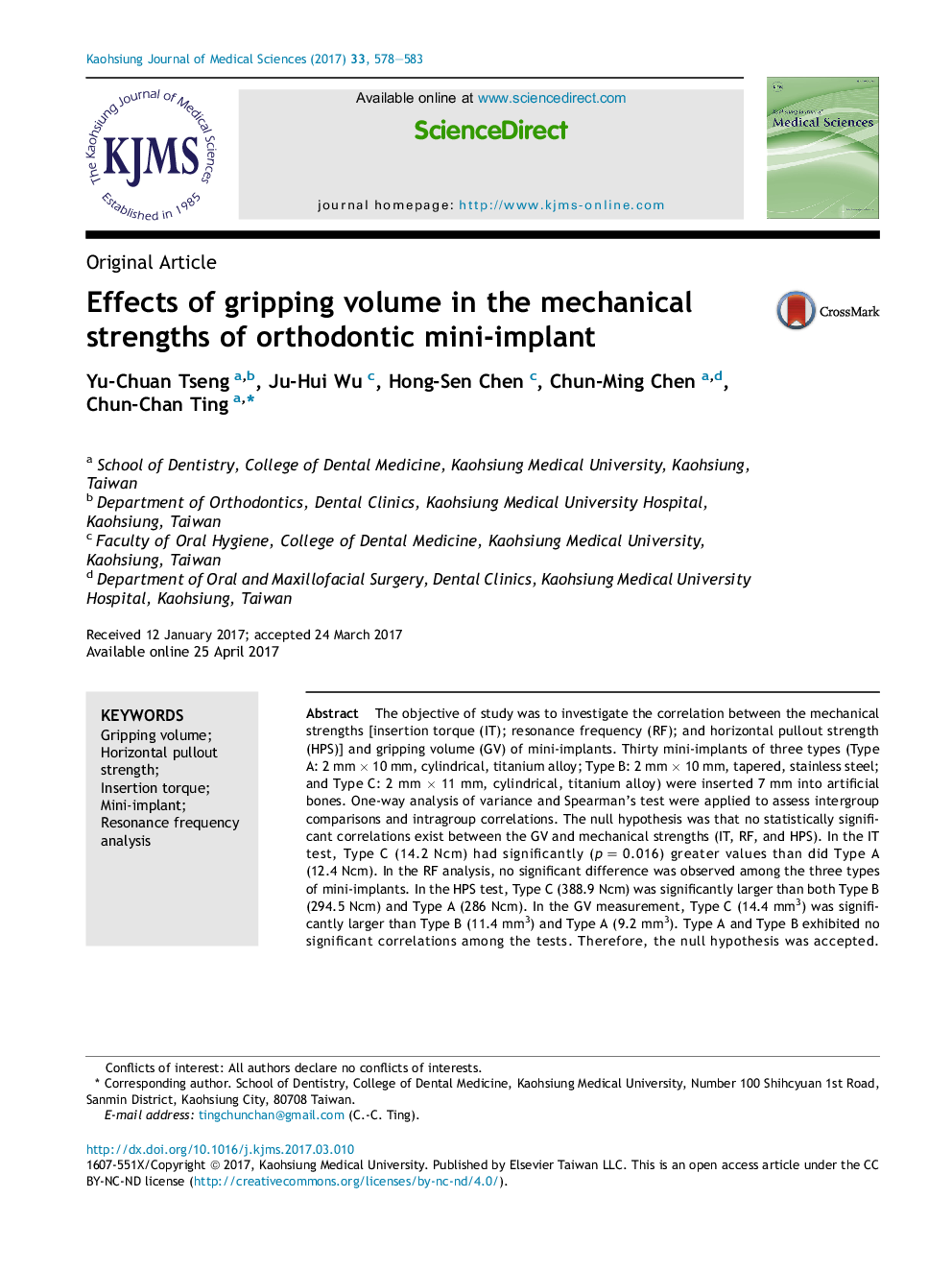| Article ID | Journal | Published Year | Pages | File Type |
|---|---|---|---|---|
| 5680232 | The Kaohsiung Journal of Medical Sciences | 2017 | 6 Pages |
The objective of study was to investigate the correlation between the mechanical strengths [insertion torque (IT); resonance frequency (RF); and horizontal pullout strength (HPS)] and gripping volume (GV) of mini-implants. Thirty mini-implants of three types (Type A: 2 mm Ã 10 mm, cylindrical, titanium alloy; Type B: 2 mm Ã 10 mm, tapered, stainless steel; and Type C: 2 mm Ã 11 mm, cylindrical, titanium alloy) were inserted 7 mm into artificial bones. One-way analysis of variance and Spearman's test were applied to assess intergroup comparisons and intragroup correlations. The null hypothesis was that no statistically significant correlations exist between the GV and mechanical strengths (IT, RF, and HPS). In the IT test, Type C (14.2 Ncm) had significantly (p = 0.016) greater values than did Type A (12.4 Ncm). In the RF analysis, no significant difference was observed among the three types of mini-implants. In the HPS test, Type C (388.9 Ncm) was significantly larger than both Type B (294.5 Ncm) and Type A (286 Ncm). In the GV measurement, Type C (14.4 mm3) was significantly larger than Type B (11.4 mm3) and Type A (9.2 mm3). Type A and Type B exhibited no significant correlations among the tests. Therefore, the null hypothesis was accepted. Although no significant correlation was noted between the GV and mechanical strengths (IT, RF, and HPS), we observed a trend that the mechanical strengths (IT, RF, and HPS) of the mini-implants corresponded to the order and values of GV (Type C > Type B > Type A).
